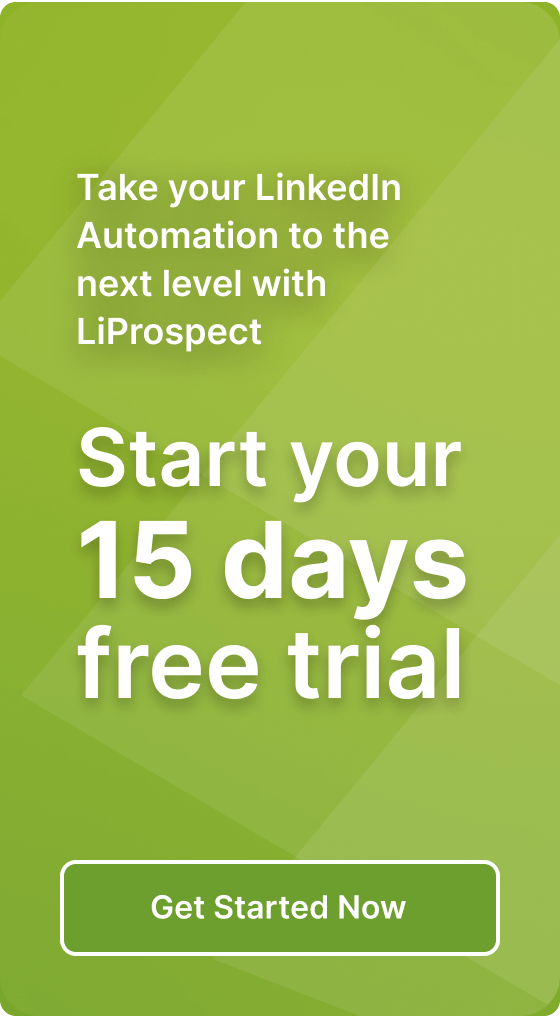The Future Path of LinkedIn in Social Selling

Could LinkedIn replace traditional sales techniques with its innovative digital strategies in the next ten years? As we venture into a new era of social selling, understanding LinkedIn’s trajectory could be key to mastering future sales dynamics. Let’s dive into what the future holds.
The Transformative Potential of Social Selling on LinkedIn
Social selling on LinkedIn is not just a trend—it’s becoming a transformative force in how businesses connect with their clients and how professionals grow their networks. This platform has turned the traditional sales model on its head by leveraging digital connections and insights to foster sales opportunities. With over 700 million users, LinkedIn’s vast network is a goldmine for professionals aiming to refine their sales strategy through social interactions and content sharing. The concept of social selling here transcends mere transactions; it involves building meaningful relationships that underpin sales success in the digital age.
Key Predictions and Trends for the Platform’s Future
As we look ahead, several key predictions and trends are likely to shape the future of LinkedIn, particularly in the realm of social selling. These include enhanced AI-driven analytics to better understand network behaviors, more sophisticated CRM integrations, and even stronger emphasis on personal branding as a means of selling. The platform is expected to become even more indispensable for sales professionals by offering more intuitive and predictive tools that align closely with user needs and market dynamics. As these tools evolve, they will help users not only to connect but also to convert these connections into rewarding professional opportunities and real sales growth.
In the following sections, we’ll explore these predictions in more detail and discuss how they might manifest in the coming decade. Join us as we unfold the layers of LinkedIn’s potential to revolutionize the sales landscape.
AI and Automation in Social Selling
The infusion of artificial intelligence and automation into social selling on LinkedIn is set to dramatically reshape how sales professionals interact, predict, and prioritize their engagements on the platform. Here’s how these technological advancements are integrating into the sales strategies.
Integration of AI-driven Chatbots for Personalized Interactions
One of the most significant advances is the integration of AI-driven chatbots on LinkedIn. These chatbots are designed to deliver personalized interactions at scale, capable of initiating contact, answering common inquiries, and maintaining a flow of communication with potential leads—all without human intervention. This not only enhances the user experience by providing instant responses but also frees up sales professionals to focus on more complex tasks, thereby optimizing their productivity and effectiveness.
Predictive Analytics for Targeted Content and Lead Scoring
Predictive analytics are transforming how sales professionals approach lead generation and content creation on LinkedIn. By analyzing vast amounts of data on user behavior and preferences, LinkedIn’s algorithms can now predict which types of content are likely to perform best and which leads are most promising based on their interaction histories. This allows for more targeted content strategies and more efficient lead scoring, ensuring that sales efforts are not wasted on uninterested parties and are instead focused on potential customers with the highest likelihood of conversion.
Automation of Routine Tasks to Enhance Sales Efficiency
Lastly, the automation of routine tasks stands out as a key benefit of AI in social selling. Tasks such as scheduling posts, sending follow-up messages, and updating CRM entries can now be automated with sophisticated software tools. This not only speeds up the sales process but also reduces the likelihood of human error, ensuring that the sales pipeline flows smoothly and that all potential leads are nurtured appropriately. This level of automation supports sales professionals in maintaining a consistent presence on the platform, crucial for building lasting professional relationships.
Hyper-Personalization and Contextual Selling
As LinkedIn continues to evolve, the focus on hyper-personalization and contextual selling is becoming increasingly prominent. These strategies leverage detailed user data and real-time insights to tailor interactions and content to meet the unique needs and interests of each user. Here’s how these innovative approaches are being integrated into LinkedIn’s social selling capabilities.
Leveraging Data for Targeted Messaging
The cornerstone of hyper-personalization on LinkedIn is the use of sophisticated data analytics to craft targeted messaging. By analyzing user activities, preferences, and interaction histories, LinkedIn allows sales professionals to send highly customized messages that are relevant to each recipient. This level of personalization ensures that communications are not only timely but also resonate deeply with potential clients, significantly increasing the likelihood of engagement. Tailored messaging helps in creating a perception of one-on-one conversation, which is key in building trust and relationships online.
Contextual Selling Based on Real-Time Insights
Contextual selling takes personalization a step further by incorporating real-time insights into the sales strategy. This approach uses data from recent user actions—such as posts they’ve interacted with, changes to their profiles, or articles they’ve commented on—to adjust sales pitches and conversations to reflect these current interests or professional developments. For instance, if a LinkedIn user recently commented on an article about innovative marketing strategies, a sales professional might reference this article when reaching out with a marketing-related product or service. This timely and relevant referencing significantly enhances the relevance of the outreach, making it more likely to be well-received.
Personalized Content Experiences for LinkedIn Users
Lastly, LinkedIn is enhancing user experience by providing personalized content experiences. This means not just personalizing the sales messages but also customizing the content that users see on their feeds. Algorithms curate content based on past behaviors and preferences to create a uniquely tailored feed for each user. For sales professionals, this means they can produce content that is not only targeted but also likely to appear in the feeds of precisely the right audience, thereby maximizing visibility and engagement opportunities. Moreover, personalized content extends beyond textual posts to include videos, infographics, and interactive media, all designed to cater to the specific interests and consumption preferences of users.
Relationship Building and Community Engagement
In the landscape of social selling on LinkedIn, the emphasis has shifted not only to personalization and efficiency but also to the foundational elements of trust and community engagement. These aspects are crucial as they underpin the success of any digital sales strategy by fostering long-term relationships and creating supportive networks. Here’s how LinkedIn is promoting these values through its platform functionalities.
Emphasis on Trust and Genuine Relationships
At the heart of LinkedIn’s social selling philosophy is the building of trust and genuine relationships between users. LinkedIn encourages its members to engage in transparent and honest interactions, which are essential for trust-building. This involves sharing insights openly, endorsing skills genuinely, and interacting in a respectful and professional manner. Sales professionals are advised to focus on creating value for their connections by providing useful information and thoughtful commentary rather than just pushing for sales. This trust-centric approach not only helps in establishing credibility but also in forming deeper, more meaningful connections that are likely to yield better sales outcomes in the long run.
Engagement-Driven Strategies in LinkedIn Communities
LinkedIn communities, such as industry groups and forums, play a pivotal role in engagement-driven strategies. These communities are designed to foster interaction around shared interests and challenges, providing a platform for members to engage in discussions, share insights, and solve problems collaboratively. Sales professionals can leverage these communities not just for networking but also to position themselves as thought leaders by actively contributing valuable content and participating in discussions. Such engagement helps in maintaining visibility and relevance within the community, thereby enhancing the professional’s influence and ability to sell organically within these groups.
Growth of Niche Groups for Networking and Knowledge Sharing
The rise of niche groups on LinkedIn is a testament to the platform’s adaptability to the diverse needs of its user base. These groups cater to specific industries, professions, or topics, offering a more targeted networking and knowledge-sharing environment. For sales professionals, participating in niche groups can be particularly beneficial as it allows them to tailor their interactions and content to the specific interests and needs of group members. Moreover, these groups often foster a closer-knit community atmosphere, which is conducive to deeper professional relationships and more effective knowledge exchange. By engaging in these specialized groups, sales professionals can enhance their expertise, gain insights into industry trends, and connect with potential clients who are specifically interested in their area of expertise.
Overall, LinkedIn’s focus on relationship building and community engagement is shaping a more interconnected and supportive ecosystem for social selling. By prioritizing genuine relationships and active participation in communities, sales professionals can not only enhance their selling potential but also contribute to a healthier, more collaborative professional environment on the platform.
Relationship Building and Community Engagement
As the digital landscape evolves, LinkedIn is placing a renewed focus on fostering robust professional relationships and engaging deeply with community networks. This approach is pivotal for long-term success in social selling, where trust and community involvement are key drivers.
Emphasis on Trust and Genuine Relationships
Building trust and genuine relationships is central to LinkedIn’s ethos. The platform encourages authentic interactions, where users are urged to engage with integrity and transparency. For sales professionals, this means prioritizing meaningful dialogue over sales pitches, emphasizing help and value over immediate gains, and consistently maintaining a professional demeanor. By investing in relationships first, professionals can create a solid foundation of trust that not only attracts but also retains clients more effectively in the competitive digital marketplace.
Engagement-driven Strategies in LinkedIn Communities
LinkedIn’s various communities, including industry-specific groups and broader interest forums, are excellent resources for cultivating professional relationships and demonstrating thought leadership. Active participation in these communities can significantly boost a user’s visibility and credibility. Sales professionals are advised to share insights, answer questions, and contribute to discussions to build a reputation as knowledgeable and reliable figures in their field. This community-based engagement is a powerful strategy for naturally developing leads and expanding professional networks without overt selling.
Growth of Niche Groups for Networking and Knowledge Sharing
The expansion of niche groups on LinkedIn reflects a growing trend towards specialized networking and knowledge exchange. These groups offer a platform for individuals with similar interests or industry backgrounds to connect, share ideas, and collaborate on specific topics. For sales professionals, these groups represent targeted opportunities to interact with potential clients who have a direct interest in their products or services. By actively participating in these groups, professionals can not only increase their industry knowledge but also enhance their professional network in a meaningful and focused way.
Redefining Sales Metrics and Performance Measurement
In the dynamic world of social selling on LinkedIn, traditional sales metrics are being redefined to better reflect the realities of the digital marketplace. As the platform evolves, so too does the approach to measuring sales performance, with a greater emphasis now being placed on a variety of new key performance indicators (KPIs) that offer a more comprehensive view of success.
Adoption of New KPIs for Social Selling Effectiveness
LinkedIn’s shift towards social selling has necessitated the adoption of new KPIs designed to measure effectiveness in this unique environment. Traditional metrics like sales volume and revenue remain important, however, new measures such as Social Selling Index (SSI), interaction rates, and conversion rates from content are gaining prominence. These KPIs help sales professionals gauge how well they are utilizing LinkedIn to connect with potential clients, build relationships, and generate leads. The emphasis is on understanding which activities contribute most to building meaningful connections that can lead to sales, rather than just tracking sales outcomes alone.
Focus on Long-term Relationships and Customer Lifetime Value
There is a growing focus on the importance of long-term relationships and the lifetime value of customers rather than just short-term sales gains. This approach recognizes that in social selling, the initial sale is just one part of a potentially long-lasting client relationship. Metrics such as customer retention rates, repeat purchase rates, and ongoing engagement levels are increasingly being monitored. These indicators help businesses to not only measure how effectively they are maintaining relationships but also to forecast future revenue potential from existing customers, making them invaluable for strategic planning.
Incorporating Engagement Rates and Sentiment Analysis
Engagement rates and sentiment analysis are critical in the context of LinkedIn social selling, where interactions often precede actual sales. Engagement rates involve measuring how individuals interact with content and communication efforts—likes, comments, shares, and the overall reach of posts are all key metrics. Additionally, sentiment analysis provides insights into how the audience perceives a brand or salesperson, which can be pivotal for adjusting strategies in real-time. Tools that analyze the tone and feedback within comments and posts help sales professionals understand the impact of their social selling efforts and refine their approaches to better align with customer sentiments.
Conclusion
As we have explored throughout this article, the future of LinkedIn and its role in shaping the next decade of social selling looks both promising and expansive. From the integration of AI and automation to enhance efficiency and personalization, to the emphasis on building trust and nurturing genuine relationships, LinkedIn is poised to redefine the landscape of digital sales. The development of new metrics for measuring social selling effectiveness further supports a more nuanced understanding of what it means to succeed in this evolving digital marketplace.
To truly excel in the future of social selling on LinkedIn, embracing the tools and technologies that facilitate these advancements is crucial. Automation, AI-driven insights, and targeted content delivery are not just enhancements but essential components of a successful digital sales strategy.
Don’t wait to start transforming your LinkedIn strategy. Sign up for the Liprospect 15-day free trial today and begin exploring the myriad benefits that automation and advanced analytics can bring to your social selling efforts. Experience firsthand how these tools can improve your efficiency, enhance your personalization efforts, and ultimately, help you build stronger, more profitable professional relationships.
As we look towards the future, the potential for LinkedIn as a powerhouse of social selling is undeniable. With the right tools and a strategic approach, there’s no limit to the success that can be achieved on this dynamic platform. Start your journey with Liprospect and unlock the full potential of your LinkedIn presence today.




